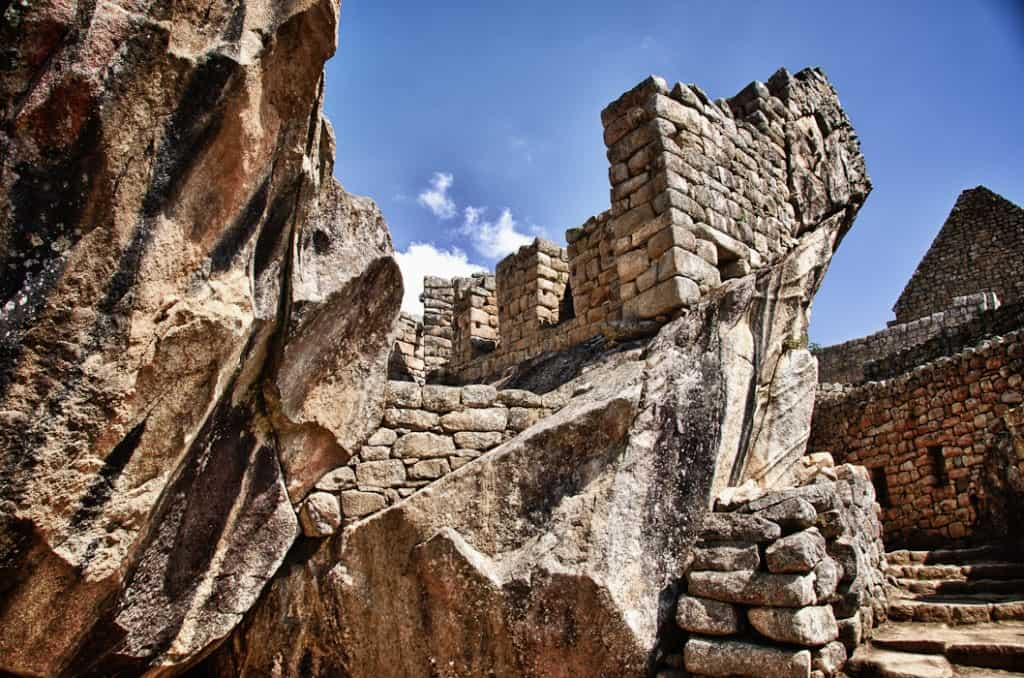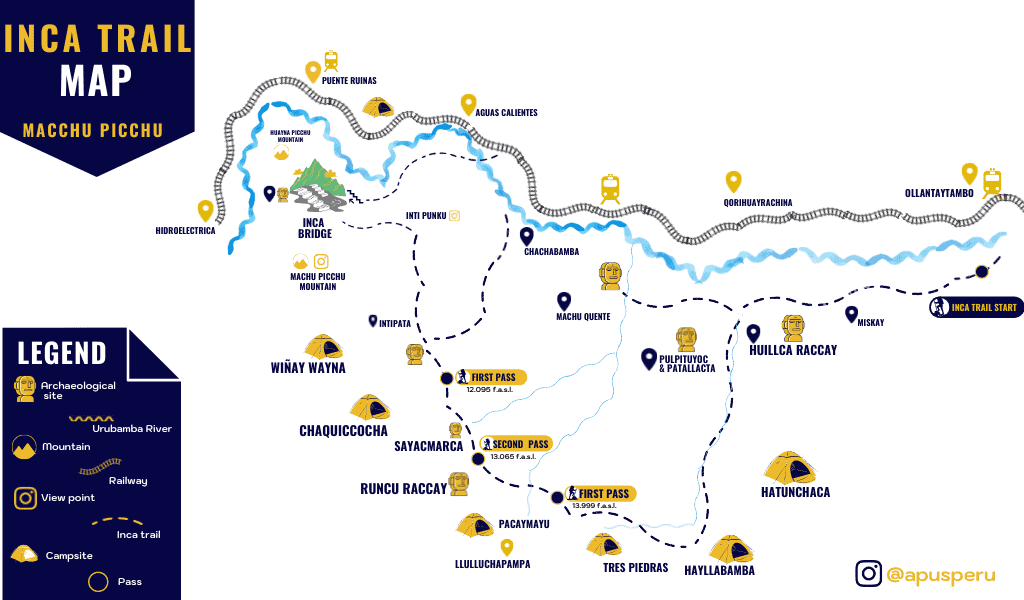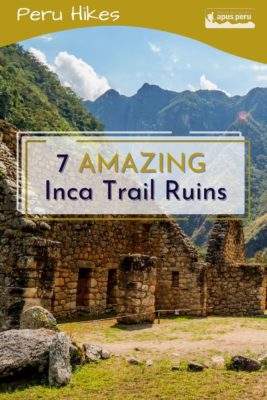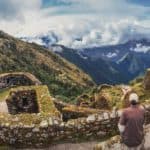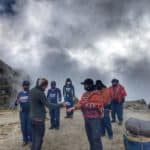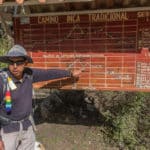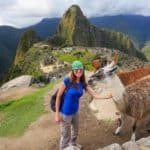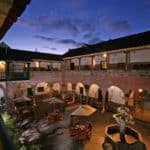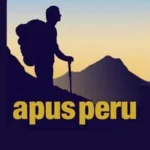Are you getting ready to hike the Inca Trail, dreaming about exploring all those fascinating Inca Trail ruins? Or perhaps you are interested in other archaeological ruins in Peru, and looking for some inspiration? Then this post is for you!
Inca Ruins in Peru
Over 500 years ago, the Inca Empire built a complex road system, which consisted of 40,000 kilometers of original Inca trails spanning north to south through what is now Chile, Ecuador, Bolivia, Colombia, Chile, Argentina and Peru. It used to be the most extensive and advanced transportation system in pre-Columbian South America, connecting villages throughout the Andean Mountains.
Today, trekkers and history enthusiasts are able to see a living testament of the fascinating ancient sites in Peru, perfectly preserved Inca ruins, farmhouses and fortresses. There are so many interesting sites to visit, and the Inca Trail is the perfect place to start.
We will take you through the 7 best Peru Inca ruins that you can find along the Classic 4 Day Inca Trail route, including on which day you will see them. Plus, we’ll share everything you’re itching to know about the Incan ruins of Machu Picchu!
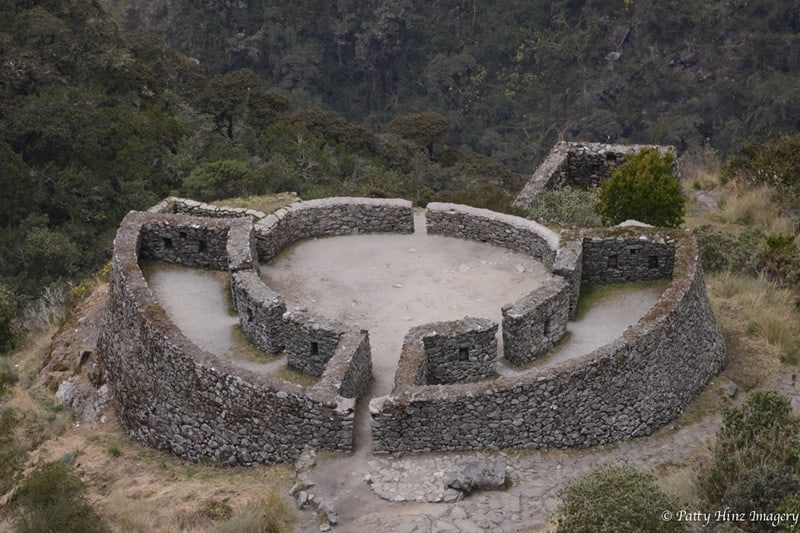
The Top 7 Inca Trail Ruins
Llactapata or Patallacta?
Let’s get started with day 1 of the Camino Inca Machu Picchu (that’s to say, day one on the Inca Trail!). The first day’s trek leaves from the main checkpoint and crosses a bridge over the Urubamba River, leading you to the first of the Inca Trail ruins you’ll see: Llactapata. Or is it Patallacta? Let us explain.
Pronounced “yakta-pahta”, the site of Llactapata is often mistaken for the larger Inca ruins of Patallacta, since both locations are commonly referred to as Llactapata. However, one is a site about 5 km west from Machu Picchu; while the other is located 15 km south east from the sacred citadel. The Inca site of Patallacta is closer to the railway tracks, whereas the smaller ruins of Llactapata are situated on higher ground.
Both ruins on the Inca Trail are linked with each other. The Quechua word “llacta” means “town”, while “pata” means “height“. It is believed that a high-ranking Inca ruler had commanded the construction of Llactapata and that it was an administrative support site for the Machu Picchu Inca ruins, possibly with some kind of ceremonial importance of its own due to its solar alignment.
Shortly after the re-discovery of the Llactapata ruins in 1912 by Hiram Bingham, they were left again due to the many complications of uncovering the Inca site from the thick vegetation and poisonous snakes that were nesting there. Finally, the Llactapata site was inspected in detail by the Thomson-Ziegler expedition in 2003. Lost, discovered, lost again and rediscovered again…!
Runkurakay
Runkurakay is another archaeological site that can be seen on day 3 during the Inca Trail Machu Picchu hike. It is located right in the middle of the route on a mountain of the same name. This means that this Inca site is inaccessible to those who don’t approach it via the Camino Inca. It offers incredible views and is the perfect place to take pictures! (For more tips on how to take great Machu Picchu/Inca Trail photos, check out this blog.)
The circular ruins lie near the Runkurakay pass, northeast of the archaeological site Sayacmarca, at an altitude of 4,000m. It is believed to be a former resting place for the chasqui messengers who would stop by to recharge their energies, until they could continue their journey onward.
Sayacmarca
The Inca ruin of Sayacmarca is divided into a ceremonial and a residential part, featuring a doorway, Sun Temple, food stores, houses and a stone staircase of almost a hundred steps. The stone architecture and canal irrigation system of this archeological Inca site is incredible and shows the highly impressive construction skills of the Inca civilization. Besides, Sayacmarca was built right on the edge of the abyss, making its access quite adventurous and challenging! It is one of the Inca sites in Peru with an astronomical use due to its design and type of construction. You can visit this beautiful site on day 3 of the 4 Day Machu Picchu Inca Trail hike
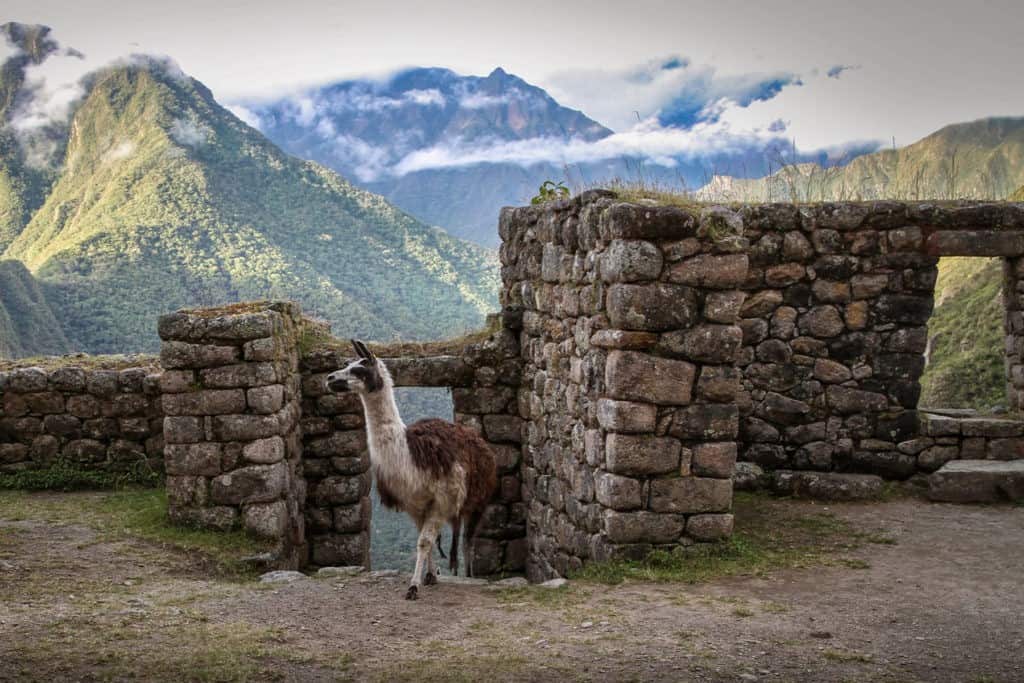
Phuyupatamarca
After visiting the archeological site of Sayacmarca on Day 3 of the classic hike, you will hike 3 hours downhill to Phuyupatamarca, which is the third highest point of the trail. It is known as the “Inca Ruins Among the Clouds” due to its unique misty scenery close to the jungle border.
Located at an altitude of 3,670m, right in the middle of the Inca Trail Cloud Forest, this amazing site offers incredible views of the entire valley with its enormous green mountains! There are some squares from which you can even admire other Inca sites of Peru, such as the Intipata or Wiñay Wayna ruins!
Phuyupatamarca consists of fifteen buildings, two main squares, six ceremonial baths, and several small alleys, stairs, and platforms, making it a unique archeological site with breathtaking landscapes!
Wiñay Wayna
After continuing downhill through the forest, you will finally reach the Wiñay Wayna Inca trail ruins. Known as one of the best Inca ruins in Peru and the “Baby Machu Picchu”, this archeological site impresses with its remnants of steep, stepped agricultural terraces, several house constructions, staircases and a little fountain.
Wiñay Wayna literally means “Forever Young” and refers to a type of orchid that can also be found in this area. The Incan ruins are located on a mountain slope and are beautifully blended with nature, which used to be a typical feature of the Incan architecture. There is also a temple with seven windows in honour of the rainbow, which was considered a gift from the sun god, Inti.
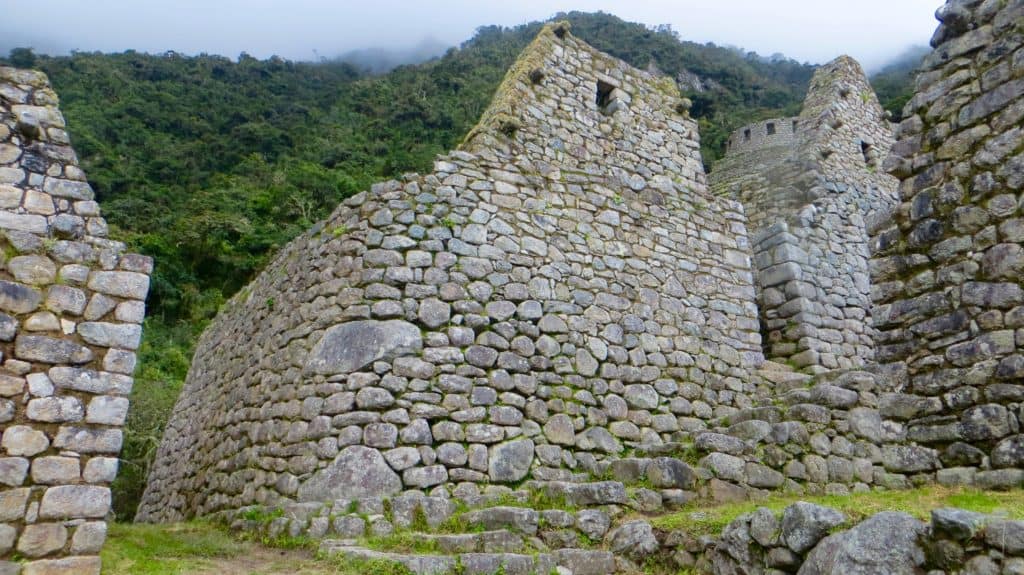
Intipata
Intipata is one of the lesser-known Inca sites in Peru and a kind of hidden gem due to its difficult and a little hidden location. This Inca place is an optional hike when taking the classic 4-day Inca trail hike to Machu Picchu. It is located at 2,840m above sea level and consists of agricultural terraces, which were typical Inca landmarks to create level platforms for growing crops on the steep slopes of the Andes Mountains.
It was constructed in a way to keep the natural aesthetic of the environment and offers beautiful views, especially at dawn when the sun rises. This is probably the reason why it is called Intipata, which means in Quechua “place of the sun”!
When you walk along the original Inca trail, you might miss this hidden site. Once you are close to an electrical post, you can take a small deviation on the trek, turning left and walking for about 20 minutes towards the Intipata Inca trail ruins.
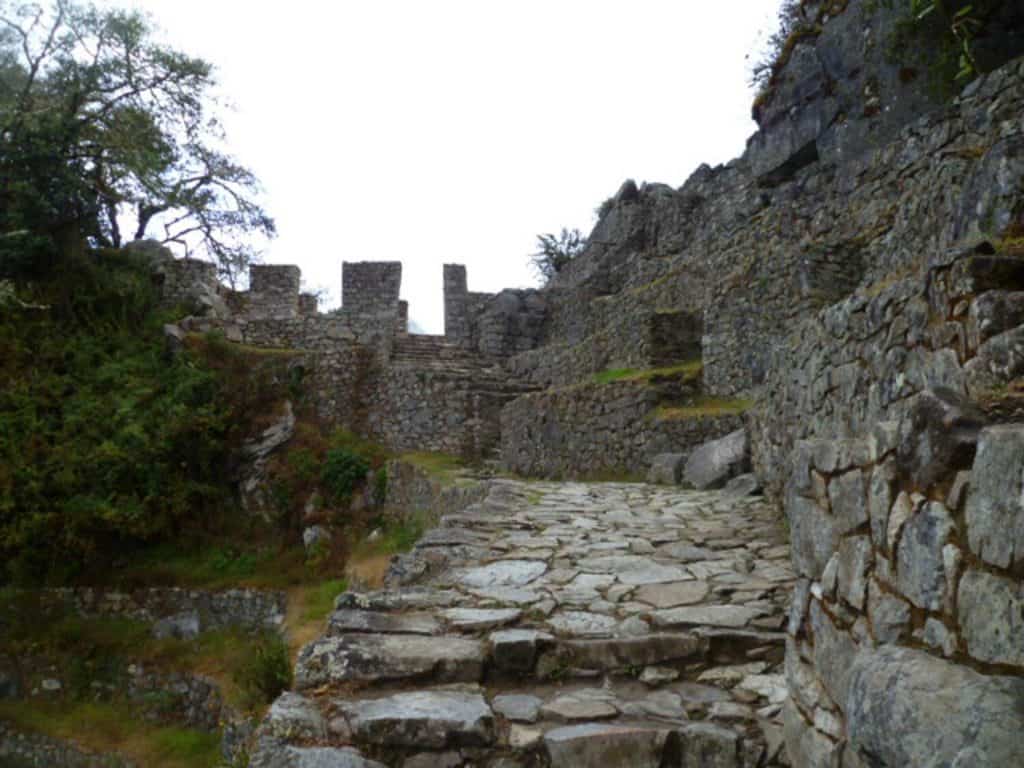
Inti Punku
Inti Punku, the “Sun Gate,” is dedicated to the sun god, Inti. Leading directly to the Inca village Machu Picchu, it was probably used as a control gate for entering the sacred Inca citadel. Located at 2,745m, these popular ruins of Peru consist of windows and gates, held up by terraces. It is one of the most well-known Machu Picchu sights, since Inca trail trekkers get a first glimpse of the World Wonder from there, being able to admire the early morning light over the mountain range of Machu Picchu.
Inca Ruins at Machu Picchu
Once arriving at the Inca town of Machu Picchu after four or five days of challenging trekking, you will be able to admire an enormous expanse of architectural features spread over an area of 32,592 hectares. These Inca Empire ruins consist of many different quarters, squares, alleys, buildings, astronomical observatories and terraces.
But what is there to do in Machu Picchu? Keep reading for more information about the best places to visit in Machu Picchu, as well as valuable historical and spiritual background stories of the four main features within the Inca citadel.
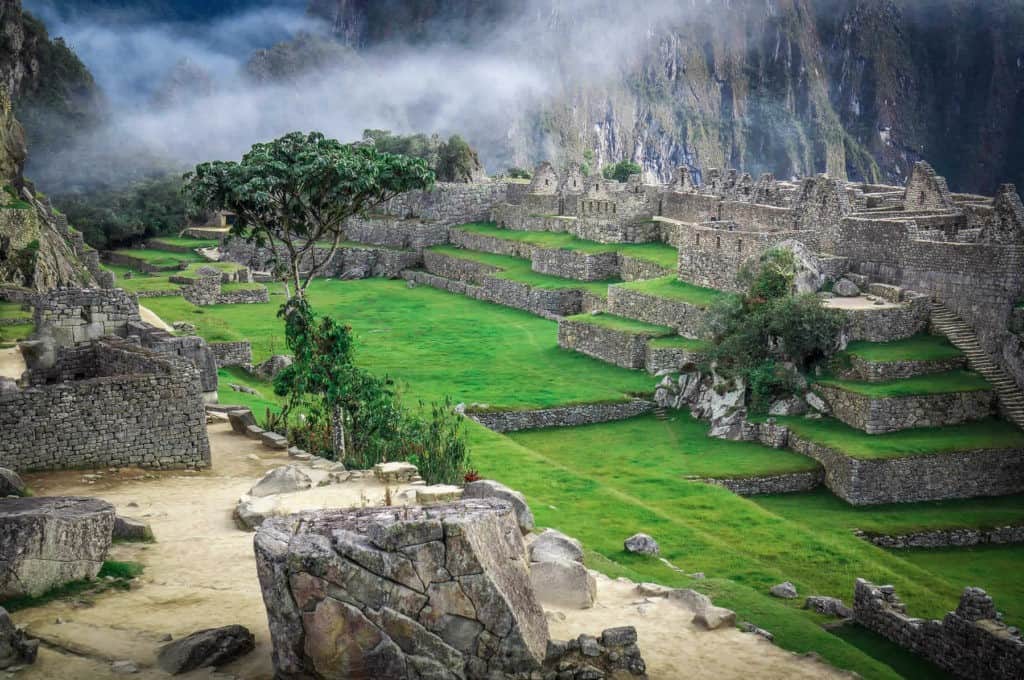
Central Plaza
The Central Plaza is one of the main Machu Picchu sights and surrounded by roofless stone constructions right in between the steep agricultural terraces. The plaza itself is the green island amid the Inca stone buildings, from where you will often see llamas grazing and enjoy a great view of Huayna Picchu Mountain.
Temple of the Condor
The Temple of the Condor is another of the key Machu Picchu landmarks due to its exquisite architectural construction and fascinating use of material. These ruins of Machu Picchu consist of natural rock, which was skilfully shaped into a condor in flight.
Because of the condors’ large size, the Incas thought that these birds were sacred messengers from heaven and a connection between the earth and sky. Apparently, the head of the condor temple was used as a sacrificial altar! Behind these Machu Picchu ruins there was also a prison complex, built with numerous human-sized niches.
Funerary Rock Hut
One of the best photo spots at Machu Picchu is the Funerary Rock Hut, located in the agricultural sector of the Machu Picchu ruins. It took its name from the many discoveries of graves with human remains within this area. The rock is the symbolic representation of the entrance to the cemetery of the Inca citadel, and presumably served as a chapel or sanctuary.
Researchers have discovered that the Funeral Rock was used for the mummification process of important Inca rulers, probably through the drying process before embalming the corpses. It is definitely one of the Machu Picchu tourist attractions that offers an incredibly dramatic view over the whole complex! From there, you can take the stairs down towards the Royal Tomb, which is also a popular Machu Picchu point of interest.
Royal Tomb
The Royal Tomb is of great importance and is located right underneath the Central Plaza ruins at Machu Picchu. The mausoleum is formed by a small natural cave with an opening facing forward. The interior of the tomb is made up of very finely carved stones and niches, and also features a large altar with two levels. The shrine was only used for the most important members of the highest circles.
This is just a taste of what there is to do at Machu Picchu! For full details, check out our blog posts on why Machu Picchu is important, things to do at Machu Picchu and everything you need to know about getting to Machu Picchu.
Other Inca Trail Attractions
There’s more to this world-famous hike than just Inca Trail ruins! Apart from the archeological sites, there are, of course, plenty of other attractions on the Inca trail. You will get the chance to admire additional fascinating viewpoints, beautiful landscapes, and other landmarks. Let us sum up for you the less well-known Inca tourist attractions and further highlights along the 4 Day Camino Inca trail.
Q’orihuayrachina
The Q’orihuayrachina ruins are one of the less-known Inca sites of Peru. Even though it is located right at the starting point of the Inca Trail to Machu Picchu not far from KM 82, many trekkers do not visit this archeological site. Q’orihuayrachina literally means “where the wind was used to refine gold” (from q’ori, gold, and huayra or wayra, wind) and is one of the highest-located attractions on the Inca trail with an altitude of 3,900 meters.
The British photographer Peter Frost discovered another site of the same name in 1999 during an expedition in the Vilcabamba region, also calling his find the “New Machu Picchu”. At these Inca ruins in Peru, there are more than 100 structures, circular houses, cemeteries, funeral towers, waterworks, agricultural terraces, roadways and a truncated pyramid.
The Dead Woman’s Pass: Warmihuañusca
Even though this notable feature is not an archeological site, the Dead Woman’s Pass has become quite famous due to its remarkable altitude. At 4,215m, it marks the highest point on the Inca Trail, which is almost 1,800m higher than the Inca ruins of Peru Machu Picchu. The name derives from its natural shape, which looks like a woman’s supine body.
Hikers climb this pass on day 2 of the Inca Trail and consider it the most challenging part of the trek. On top of the pass you can take incredible images of the Inca Trail, while admiring spectacular views of the Salkantay and Veronika Mountains.
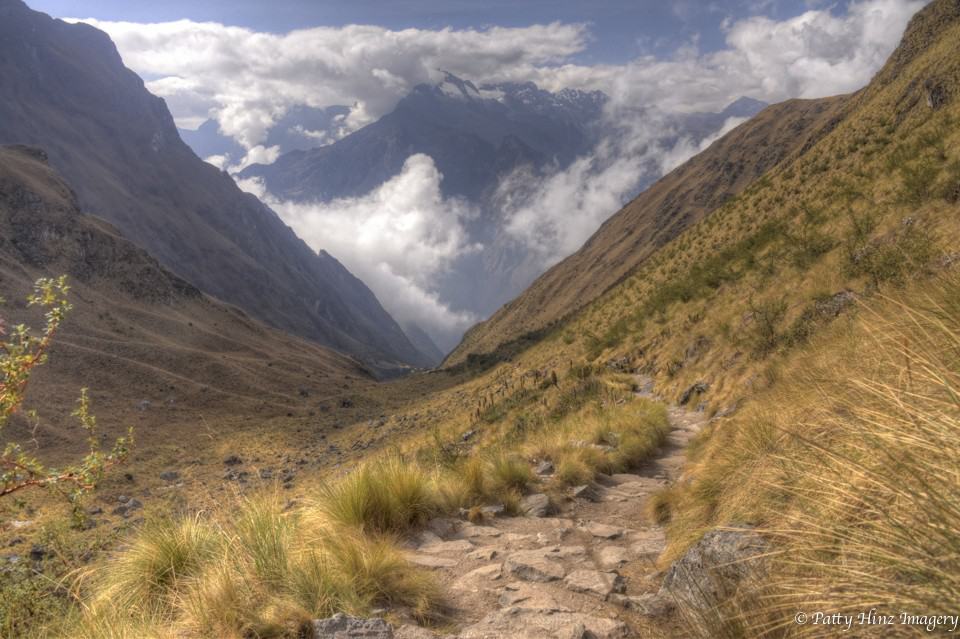
Before reaching the third pass on the Inca Trail, you will go past a 20-meter-long Inca Tunnel, which is probably one of the most mysterious Inca trail attractions in terms of its construction. An enormous rock is blocking the trekking route. There is a raised causeway with a hewn tunnel and notches created in a cliff face, making it possible to walk up its side. Until today researchers are not sure how the Incas were able to build this incredible tunnel construction!
More Inca Ruins & Attractions on the Inca Trail
There are still a few more Inca attractions along the trail, of which many are off the beaten track and little visited!
- Willka Raqay: An archeological Inca site right above Patallacta, which used to be a point of control.
- Chachabamba:These ancient Inca ruins in Peru offer an invaluable view with enormous green mountains and misty clouds, and thought to be dedicated to water.
- Choquesuysuy: This sacred Inca attraction is believed to be dedicated to agriculture.
- Yuncachimpa: A resting area with Inca trail bathrooms for hikers, as well as a place to buy supplies and snacks along the trekking route.
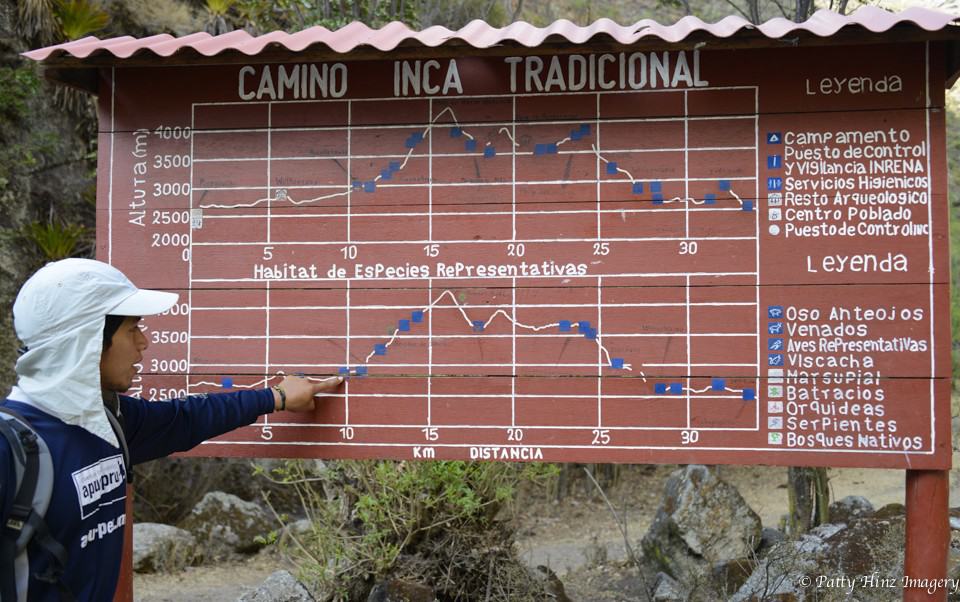
Hiking the Inca Trail to Machu Picchu: What You Need to Know
The Trail of the Incas is definitely a once-in-a-lifetime experience, full of spectacular natural landscapes, rich history, plus you also get the chance to discover the most popular ancient Inca villages in Peru. But where is the Inca Trail? And how to do the Inca Trail? Let’s take a quick look at useful Inca trail info in order to be ready for your next trekking adventure!
How to Choose the Best Inca Trail Hike for You
Many people don’t realise, but there are actually many ways to hike the Inca Trail to Machu Picchu. Which option you choose depends on many factors, like whether you want to experience something a little more off-the-beaten-path, how much hiking you want to do, whether or not you want to camp, and how far in advance you try to book your Inca Trail experience! See all our Inca Trail hike options here and have a look at our Insider Guide to the Inca Trail Hike.
Related: Get more details on Inca Trail options in our blog!
- The Short Inca Trail: A 2-Day Hike to Machu Picchu
- The 5-Day Inca Trail, The Best Inca Trail Tour!
- How to Choose Your Machu Picchu Trek
Inca Trail Map
Our handy Inca Trail hike map gives you a better idea of the lay of the land during your trek. Inca Trail ruins, campgrounds, and passes are all clearly marked, as well as the altitude at various points along the route:
Inca Trail Campsites
The most commonly booked Inca Trail campsites are Wayllabamba – Pacaymayo – and Wiñay Wayna, but there are other alternatives! Here is a bit of information about some of the principal campsites along the Inca Trail:
Night 1
- Huayllabamba: Sometimes spelled Wayllabamba, this campsite is located at 3,000m and is most commonly where hikers camp on the first night, though other alternatives include Ayapata and Chamana. This landmark used to be a little town and administrative center during the Inca period.
Night 2
There are three Inca Trail campsite options for Night 2:
- Llulluchapampa: Here you will have the last opportunity to buy supplies and snacks until reaching the sacred Peru Machu Picchu ruins.
- Pacaymayu: This campsite is located in the Pacaymayu Valley at an altitude of 3,500 meters.
- Chakiccocha:Also spelled, Chaquiqocha or Chaquiccocha, it literally means “dry lake” in Quechua.
Night 3
Hikers have two campsite choices on Night 3 of the classic 4-day trek and it can get contentious! We go through the pros and cons of both in detail in our blog on Wiñay Wayna vs Phuyupatamarca.
- Wiñay Wayna: This is the most coveted Inca Trail campsite, where most trekkers expect to camp on day 3. Located just 4.8 km from the Sun Gate – a 2-hour walk – it is the nearest campsite to the Peru ruins of Machu Picchu.
- Phuyupatamarca: The less-popular Phuyupatamarca campsite is at a higher altitude than Wiñay Wayna, and farther away from Machu Picchu. That said, we think it is the most beautiful campsite on the whole Inca Trail, and is the default campsite used on the 5 day Inca Trail trek.
Want more Inca Trail info? Check out our COMPLETE guide on hiking the Inca Trail.
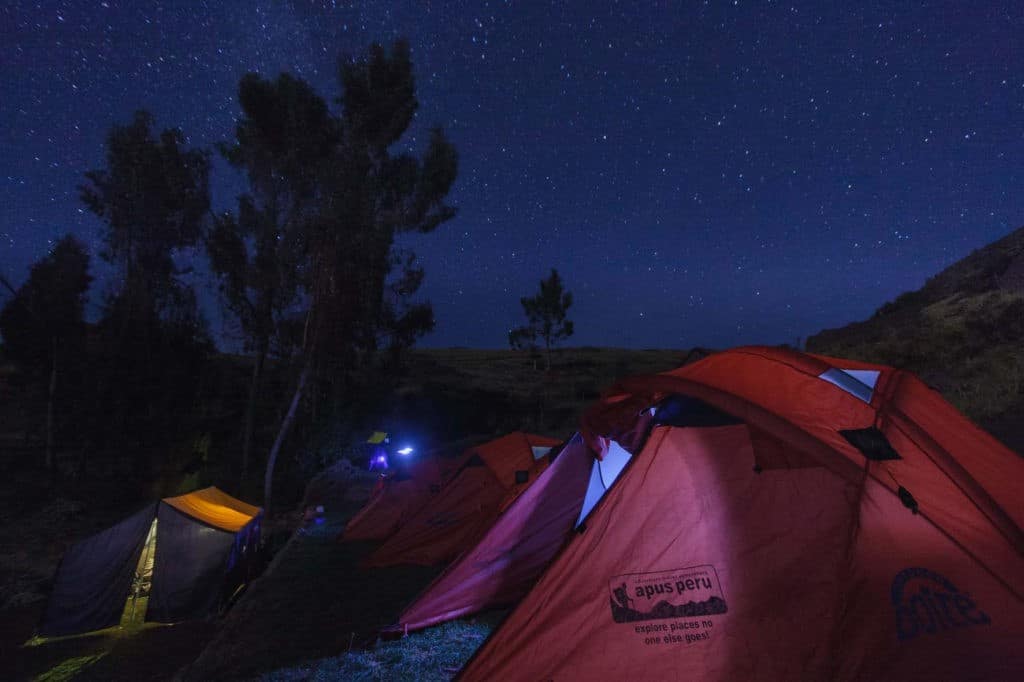
Plan Your Trek to the Inca Trail Ruins Ahead!
Getting to Machu Picchu via the famous Inca Trail is truly an unforgettable experience and a unique opportunity to discover the most impressive Inca Trail ruins and other Inca temples in Peru. However, due to its popularity and the negative impacts of over-tourism on the ruins of Machu Picchu, the Classic 4 Day Inca Trail is limited to just 500 people a day, including guides and porters! Permits sell out several months in advance, so make sure to plan your Inca trail adventure well ahead of time. If you need more tips on what to pack for Peru and how to prepare your trekking adventure, contact us today for more information about the Inca Trail! Our expert team is ready to help you find the perfect trekking route including the most fascinating Inca ruins in Peru for you!
Like it? Pin it!
Keep Reading:
- Facts About the Inca Trail
- Ultimate Landmarks and Famous Places in Peru: From Rainforests to Ruins
- Machu Picchu Alternatives: 17 Inca Ruins That Will Blow You Away

